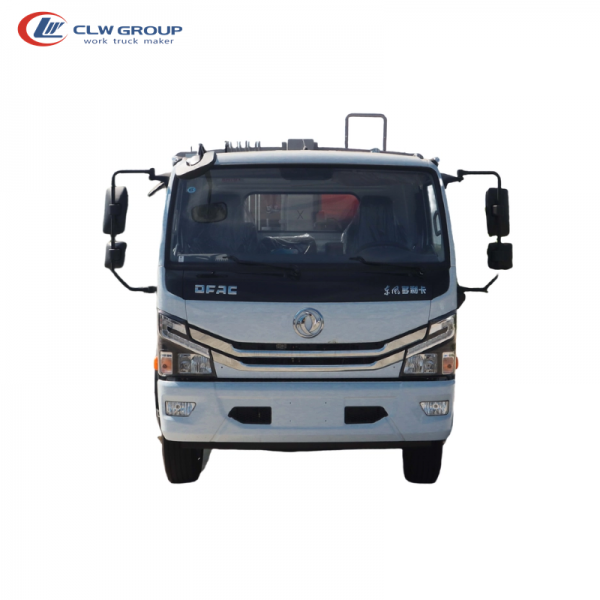Introduction
Truck-mounted cranes are essential pieces of equipment in various industries, including construction, transportation, and logistics. These versatile machines combine the mobility of a truck with the lifting capabilities of a crane, making them invaluable for lifting and moving heavy loads in a wide range of applications. One of the key challenges faced by operators of truck-mounted cranes is ensuring stability during operation to prevent accidents and ensure optimal performance. In this article, we will explore the importance of stability in truck-mounted cranes and discuss various technologies and design features that can enhance stability for increased safety and efficiency.
Importance of Stability in Truck-Mounted Cranes
Stability is a critical factor in the safe and efficient operation of truck-mounted cranes. When lifting heavy loads or operating in challenging conditions, such as uneven terrain or strong winds, maintaining stability is essential to prevent the crane from tipping over or causing accidents. A stable crane not only ensures the safety of the operator and bystanders but also helps to protect the integrity of the load being lifted and the equipment itself. By enhancing get redirected here , operators can work more confidently and efficiently, reducing the risk of costly downtime and accidents.
Factors Affecting Stability in Truck-Mounted Cranes
Several factors can impact the stability of a truck-mounted crane, including the weight and distribution of the load, the terrain and ground conditions, wind speed and direction, and the crane's configuration and design. Understanding these factors and their effects on stability is crucial for operators to make informed decisions and take necessary precautions to ensure safe operation. By addressing these factors proactively, operators can minimize risks and optimize the performance of the crane in various working environments.
Technology and Design Features for Enhancing Stability
To enhance stability in truck-mounted cranes, manufacturers have developed innovative technologies and design features that help operators maintain control and balance during lifting operations. These advancements are aimed at improving the overall performance and safety of the crane while increasing efficiency and productivity. Some of the key technologies and design features that contribute to enhanced stability in truck-mounted cranes include:
1. Automatic Stability Control Systems: Many modern truck-mounted cranes are equipped with automatic stability control systems that monitor the crane's stability in real-time and adjust the operation parameters accordingly. These systems use sensors and algorithms to detect any shifts in the crane's center of gravity or changes in external conditions, such as wind gusts or uneven terrain, and automatically make adjustments to maintain stability. By providing real-time feedback and control, these systems help operators work more safely and efficiently, especially in challenging environments.
2. Outriggers and Stabilizer Legs: Outriggers and stabilizer legs are essential components of truck-mounted cranes that provide additional support and stability during lifting operations. These extendable legs are deployed to the sides or rear of the crane to create a wider base and distribute the weight of the load more evenly, reducing the risk of tipping over. By extending and retracting the outriggers as needed, operators can adjust the crane's stability to suit the specific requirements of the job site, ensuring safe and efficient operation.
3. Load Moment Indicators (LMI): Load moment indicators are devices that measure the load being lifted and calculate the crane's moment capacity in real-time. By monitoring the load and the crane's capacity, LMIs provide operators with valuable information about the safe working limits of the crane, helping them avoid overloading and maintain stability. Some advanced LMIs also feature visual and audible alarms to alert operators when they are approaching the crane's capacity limits, preventing accidents and ensuring safe operation.
4. Variable Outrigger Positioning: Some truck-mounted cranes are equipped with variable outrigger positioning systems that allow operators to adjust the position and angle of the outriggers independently. By fine-tuning the outrigger configuration to suit the terrain and working conditions, operators can optimize the crane's stability and lifting capacity, improving safety and efficiency. Variable outrigger positioning systems provide greater flexibility and control over the crane's stability, enabling operators to work more confidently in challenging environments.
5. Telescopic Boom Design: The design of the crane's boom also plays a crucial role in enhancing stability during lifting operations. Telescopic booms, which can extend and retract to reach different heights and distances, offer greater flexibility and control over the load, reducing the risk of overreaching or tipping over. By adjusting the boom length and angle as needed, operators can maintain a stable lifting configuration and ensure safe operation, even when working in tight spaces or at height.
6. Counterweight Systems: Counterweight systems are used to balance the crane's load and offset the weight of the lifted objects, improving stability and control during lifting operations. By adding or removing counterweights as needed, operators can adjust the crane's center of gravity and prevent tipping over or losing control of the load. Counterweight systems are essential for ensuring safe and efficient operation of truck-mounted cranes, especially when lifting heavy or unbalanced loads.

Conclusion
Enhancing stability in truck-mounted cranes is essential for ensuring safe and efficient operation in a wide range of applications. By leveraging advanced technologies and design features, operators can improve the overall performance and safety of the crane while increasing productivity and reducing the risk of accidents. Automatic stability control systems, outriggers and stabilizer legs, load moment indicators, variable outrigger positioning, telescopic boom design, and counterweight systems are just some of the key technologies and features that contribute to enhanced stability in truck-mounted cranes. By understanding the importance of stability and implementing these advancements, operators can work more confidently and effectively, minimizing risks and maximizing the crane's potential in various working environments.
